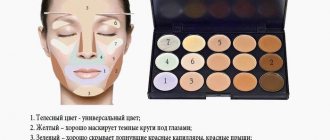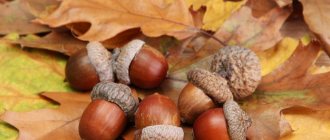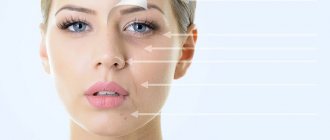Skinoren gel and cream is an excellent drug aimed at treating acne and other skin rashes. Despite the fact that many consider these two dosage forms to be the same and use either one or the other, there are still differences between them. We recommend that you understand what the difference is so that skin care and problem solving are as effective as possible.
Interesting! Acne on the face is a problem that affects not only teenagers during puberty. Various reasons can cause rashes and inflammatory processes to appear on the skin. The use of acne cream is one of the important elements of caring for problem skin. It will help normalize the functionality of the epidermis and hide unwanted rashes.
Description of drugs Skinoren
Skinoren gel and cream have the ability to eliminate problems caused by acne, various rashes, and skin irritations, that is, restore a healthy appearance to the skin. The action of these two forms is the same, there are differences in the effectiveness of the drugs, each of which exhibits its own positive properties for various skin diseases.
- Skinoren cream has a creamy consistency of medium thickness. It has a homogeneous composition of whitish color. The active ingredient of the cream is azelaic acid. Release form: aluminum tube weighing 30 g.
- Skinoren gel has a light structure that is capable of faster absorption. The active ingredient is azelaic acid. It is a substance with an opaque homogeneous structure, white or yellowish in color. Release form: aluminum tube in 5, 15, 30, 50 g.
Therapeutic effect of drugs
The mechanism of skin diseases that are treated with azelaic acid preparations has long been revealed and understood. The fatty secretion produced by the sebaceous glands enters the skin surface through the lumen of the hair follicles and protects it. Due to various processes, skin pores become clogged with fat and dead epithelium, which can lead to the proliferation of pathogenic bacteria and the occurrence of pathology.
Skinoren effectively inhibits the growth of bacteria and staphylococci on the skin. Reducing the inflammatory process in turn prevents the formation of new blackheads or acne. Effectively reducing the proliferation of epidermal cells reduces and normalizes the number of keratinized skin scales. In essence, the gel and cream accelerate the resorption of sebaceous plugs in the pores of the skin, melting them.
Blocking with Skinoren drugs the excessive production of melanin pigment, which directly affects skin color, allows you to effectively combat age spots. With regular treatment, areas with darkened skin turn pale and become almost invisible.
Neutralizing the development of acne, rosacea and other skin pathologies using a cream or gel is very effective, which is confirmed by many clinical applications. Despite deep penetration into the skin, azelaic acid practically does not enter the blood, so the use of the drugs is completely harmless.
Composition of Skinoren cream and gel
The cream manifests itself as a product that can have an effect aimed at foci of inflammation. The active substance in its composition is azelaic acid, the uniqueness of which makes the cream effective against skin rashes. Azelaic acid included in the gel has only a 15% concentration, whereas in the cream it is in a concentration of 20%. Unlike the gel, the cream also contains other components that increase its effectiveness.
Effect of Skinoren cream and gel
Skinoren group skin products in the form of cream and gel have approximately the same effect on problem skin, thanks to the active substance in the form of azelaic acid. Some difference in their action is due to different concentrations of this component. There is less of it in the gel, but the light structure of this form of the drug ensures rapid penetration of the main substance into the deeper layer of the skin, so there is no need for its high concentration.
The effective action of Skinoren in the form of a cream is due to the high content of oils, since 15% of its composition is the presence of fatty acids, in contrast to the gel, where there are only 3%. Therefore, the cream is not able to penetrate deep into the epidermis, but it has an effective therapeutic effect on the surface layer of the skin.
The effect of Skinoren drugs is approximately the same; their use can eliminate the following pathological disorders in the body:
- Destruction of bacterial microflora, as a result of which the risk of developing infectious processes increases.
- Normalizing the function of the sebaceous glands, stopping the excessive secretion of subcutaneous fat.
- Elimination of inflammation that forms at the site of rashes.
- Bringing the general condition of the skin back to normal, smoothing its texture and restoring color.
Thanks to azelaic acid, which is included in the composition of the preparations, the violation of the acid-base level of the skin is eliminated, bringing its components back to normal. Thanks to this main component, Skinoren preparations can influence the composition of the enzyme that skin pores secrete. The anti-inflammatory effect of a gel or cream lies in its ability to change the components included in sebum, thereby creating an acidic environment. As a result of this, harmful bacteria entering the skin pores die.
One of the many benefits of using the products is to reduce skin sensitivity to ultraviolet radiation and protect against its radiation. Therefore, for example, the cream has proven itself well as a day cream that increases the protective properties of the epidermis.
Indications for use
Skinoren in the form of a cream or gel is used in the treatment of pathological skin conditions of various types. The main indication for use is skin problems with impaired sebum production, in the form of acne and traces left from rashes caused by this disease, increased pigmentation, freckles, etc.
Due to their effective effect on affected areas of the skin, drugs from the Skinoren series are considered one of the most effective means for treating problematic skin conditions. There are some differences in the indications for the use of Skinoren cream and gel. Although both of them are quite effective and can relieve skin diseases, it is nevertheless better to use the gel in case of inflammation, since it is able to manifest its properties with maximum benefit a short time after application.
In addition, it easily penetrates deep into the epidermis, which in some cases is extremely important. The cream is more often used for external damage, for example, for melasma - increased pigmentation of the upper layer of skin caused by ultraviolet rays.
Treatment of concomitant diseases and disorders in patients with rosacea
Treatment of concomitant diseases or elimination of provoking factors are one of the key stages in the management of patients with rosacea [1].
Hormonal disorders
Apparently, the manifestations of the vascular component in rosacea are largely due to hormonal disorders. The complex of hormonal influences on the condition of blood vessels (estrogens, progesterone, etc.) is well known. In particular, increased blood flow in the facial skin, as well as venous stasis, can cause persistent erythema, which explains the frequency of rosacea in middle and older age groups in women [2]. Hormonal examination and consultation with a gynecologist-endocrinologist is an important step in the rosacea treatment program.
At the same time, dermatologists prescribe external products containing vitamin K, ascorbic acid and other drugs to strengthen the vascular wall, as well as agents that improve lymphatic drainage (for example, caffeine derivatives).
Disturbance of intestinal microbiocenosis - dysbiosis
Dysbiosis, a pathological condition of the intestinal flora, has been found to influence the course of rosacea. The main localization of rosacea is the central areas of the face. A parallel can be drawn with juvenile T-shaped acne, where there is a similar localization of the rashes, and in which gastrointestinal pathology is detected. The role of dysbiosis in rosacea, its identification and correction is an important issue that requires a separate serious discussion.
I would like to draw your attention to the fact that dermatologists, when jointly managing dermatological patients with a gastroenterologist, sometimes encounter superficial, ineffective treatment of dysbiosis.
According to gastroenterologist Professor Shatikhin, dysbiosis is very often treated without taking into account or diagnosing the underlying pathology or the true nature of changes in microbiocenosis. The selection of therapy is carried out empirically. The result is low effectiveness of treatment [3]. And for dermatologists, this means a decrease in the results of treatment of skin pathologies or unstable remission.
Infectious diseases (helminthiasis, giardiasis)
According to WHO, the number of patients with intestinal helminthiases, the most common socially significant infectious diseases, reaches 1.4 billion people per year. In Russia, about 2 million patients with parasitic diseases are registered annually [4]. The number of clinically significant species of parasites, including intestinal protozoa, in particular Giardia, is increasing [5].
Treatment of giardiasis in complex therapy of acne and rosacea provides not only a faster clinical effect, but also stable remission of the disease [6].
Metronidazole
, a nitroimidazole derivative, which is the drug of choice in the treatment of trichomoniasis, amebiasis and giardiasis, has long established itself as an effective remedy in the treatment of rosacea.
There is still no consensus on the mechanism of action of the drug, and it is not clear which of its pharmacodynamic properties plays a leading role in achieving a clinical effect in the treatment of rosacea. It has been established that metronidazole enhances the protective and regenerative functions of the mucous membrane of the stomach and intestines, and also has a pronounced anti-edematous effect [7]. The drug provides a bacteriostatic effect against gram-negative anaerobic bacilli, Giardia, as well as an antiparasitic effect against Demodex folliculorum
.
Evidence that metronidazole, when administered systemically, has a suppressive effect on Demodex folliculorum
on the skin, has not yet been confirmed. Local use of drugs (lotions, gels) with metronidazole is quite effective.
Individual food intolerance
In recent years, there have been reports of good results in the treatment of a number of skin diseases using a diet that consists of excluding for a certain period a number of foods to which there is an individual intolerance. Food intolerance is often asymptomatic. In this case, the body receives products that it cannot fully process, which leads to a decrease in immune defense.
Immune status disorders (allergies, autoimmune thyroid pathology)
Allergic concept of rosacea.
With the development of rosacea, manifestations of sensitization to certain products, to
Demodex folliculorum
, helminths and protozoa, to the bacterial flora of the intestine, to fungi of the genus
Candida
, etc., are not excluded. The disease is most severe in the case of autoimmune pathology of the thyroid gland.
Prescribing antihistamines and homeopathic medications with simultaneous treatment by appropriate specialists
reduces the degree of allergic reaction and increases the effectiveness of rosacea treatment.
Nervous system disorders
Psychological stress, vegetoneurosis, excessive emotionality, and vulnerability often accompany patients with rosacea and require separate mandatory correction, including using traditional methods: homeopathy, hirudotherapy, bioresonance therapy, etc.
Reflex reaction of the skin
The energy connections between the skin and internal organs and the spine are taken into account. The reaction of “nerve irritation” (from mesotherapy, massage, ozone therapy, etc.) from the skin is carried out along nerve pathways to the pathological focus in a particular organ. This connection, of course, also works in the opposite direction. Therefore, for any skin disease or disorder, it is necessary to exclude a reflex reaction when dermatological manifestations serve as a signal of a disorder or disease of any internal organ. If we are talking about such a case, the internal organ should be treated. Skin symptoms will go away faster or disappear on their own [8]. At the same time, we see a good effect when using antihomotoxic (homeopathic) complexes
: Traumel comp., Zeel comp., Coensim comp., Ubichinon comp., Cutis comp., Discus comp. and etc.
Instructions for use of Skinoren cream
The cream should be used for irritated skin prone to dryness, due to the fact that the effect of this form of Skinoren is much milder. The cream is not a hormonal agent, which is why dermatologists often use it in therapy. It, unlike the gel, is not an express remedy that can instantly relieve pathological changes on the skin.
To obtain the desired effect, it is necessary to use it regularly; the course of treatment for some skin diseases lasts up to three months, and to get rid of pigmentation disorders and freckles, the cream must be used for at least six months.
When using Skinoren cream, it is applied in the form of a thin layer, while it is perfectly absorbed and invisible on the skin. At first, the application procedure is carried out every morning, and after the skin condition improves (and this will not happen earlier than 2-3 months), it will be enough to use the cream twice a week.
On the severity of the disease in men and women
Such a diagnosis as rhinophyma is typical mainly for men. As for the papulopustular and abscess forms of rosacea, more severe forms are also more common in men (by the way, as with acne), but this is more likely due to a woman’s desire for beauty and an earlier visit to the doctor.
Often patients, mostly women, with the so-called steroid-induced form of rosacea come to see a dermatocosmetologist. This form develops against the background of long-term treatment with corticosteroid ointments prescribed by dermatologists. Patients, encouraged by the quick effect after using steroid ointments (blanching, relieving itching, resorption of papules, etc.), continue self-treatment for months and even years, without contacting doctors. It is quite difficult to treat such patients, since after stopping the use of steroid ointments, a “withdrawal symptom” occurs: a sharp exacerbation of the disease (the appearance of severe redness and itching).
When treating steroid-provoked rosacea, the abolition of external steroid medications is carried out gradually with partial replacement or alternation with medicinal cosmetics. For example, a good effect is achieved by external use of medicinal cosmetics containing Zn, in particular Cu-Zn cream, spray (Uriage) after Sensibio lotion (Bioderma) instead of washing.
Instructions for use of Skinoren gel
This type should be used for oily skin, as the gel, when absorbed, refreshes the skin and has a mattifying effect. For this type of skin, the cream may be too heavy and lead to clogged pores. The gel contains up to 70–80% water, which ensures its easy penetration into the epidermis. When using, the gel is quickly distributed over the skin with light movements. The drug is not addictive, so it can be used for a long time until the desired effect is achieved.









